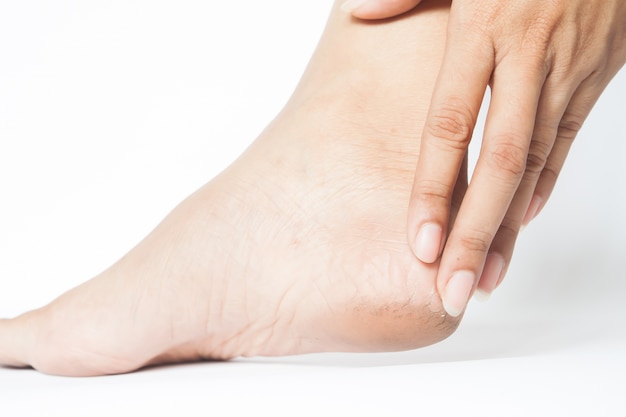
Swollen feet happen when fluid accumulates in the lower part of the body, particularly in the ankles, feet, and legs. While this can occur for various reasons, it’s often not serious and tends to resolve on its own. However, if the swelling doesn’t go away and is accompanied by other symptoms, it’s important to get medical attention.
### Common Causes of Swollen Feet
Swollen feet can result from minor issues like standing for long periods or more serious causes that require medical attention. It might stem from medications, pregnancy, injury, or even age. Older adults are more prone to this due to aging. Swelling usually occurs in the lower body, either on one or both sides, because gravity plays a role. If it lingers, swelling can disrupt daily activities and signal underlying health concerns.
#### Symptoms of Swollen Feet:
– Swelling in the feet, ankles, or legs
– Red or discolored skin
– Itchiness in the affected area
– Temporary loss of sensation
– Difficulty walking
—
### Understanding the Causes and Treatments for Swollen Feet
#### 1. **Foot or Ankle Injury**
Swelling often results from injuries, ranging from mild sprains to more severe trauma. This type of swelling is typically accompanied by other symptoms like pain or redness.
**Treatment:**
– Rest the injured area and avoid applying pressure.
– Elevate the foot when possible.
– Use ice packs to reduce swelling and compression bandages for support.
– Over-the-counter pain relievers can help; see a doctor if the swelling persists.
#### 2. **Infections**
Infections, such as those caused by bug bites, burns, or blisters, can lead to fluid buildup in the feet. People with diabetes or nerve-related issues are especially susceptible.
**Treatment:**
– Oral or topical antibiotics prescribed by a doctor can reduce swelling caused by infections.
#### 3. **Blood Clots**
Clots in the legs can block normal blood flow, leading to swelling—typically on one side. Other common signs include redness, fever, and pain.
**Treatment:**
– Stay hydrated and exercise to improve circulation.
– Blood thinners may be prescribed by a doctor.
– Avoid prolonged sitting or sitting in one position.
– Incorporate regular physical activity into your lifestyle.
#### 4. **Side Effects of Medications**
Certain medications, including those for diabetes, blood pressure, and anti-inflammatories, can lead to swollen feet.
**Treatment:**
– Consult your doctor to adjust or switch medications causing this side effect.
#### 5. **Liver Disease**
Liver problems can cause the body to retain fluid, leading to swelling in the feet and legs. Symptoms may also include yellowing of the skin, dark urine, and abdominal pain.
**Treatment:**
– Manage body weight and avoid alcohol.
– Take prescribed medications and, in severe cases, consider surgical interventions.
#### 6. **Heart Failure**
Swelling in the lower body can indicate heart failure if blood flow slows down. It’s often accompanied by fatigue, breathing issues, rapid heartbeat, and chest pain.
**Treatment:**
– Seek immediate medical advice, as this is a serious condition.
– Long-term medications or medical devices may help regulate heart function, and surgery might be necessary in advanced cases.
#### 7. **Kidney Disease**
Kidney problems can lead to salt and fluid retention, resulting in swelling in the feet and ankles. Other symptoms may include fatigue, itchy skin, and high blood pressure.
**Treatment:**
– Lower salt intake and manage high blood pressure.
– Medications like diuretics, phosphate binders, and supplements are often used.
– Dialysis or a kidney transplant may be necessary for severe kidney failure.
#### 8. **Lymphedema**
This condition arises when lymphatic fluid accumulates after lymph node damage or removal—often post-cancer treatment. It results in noticeable swelling in the legs or feet.
**Treatment:**
– Manual lymph drainage through massages
– Exercises to improve fluid circulation
– Compression garments or bandages
– Pneumatic compression devices or surgery for extreme cases
#### 9. **Edema**
Edema is caused by fluid retention in the body’s tissues, leading to puffiness in the legs, feet, and ankles. It’s often harmless but might require attention if severe.
**Treatment:**
– Elevate your legs and reduce salt intake.
– Use compression stockings and diuretic medications as necessary.
– Physical activities like “legs-up-the-wall” yoga pose can help.
#### 10. **Venous Insufficiency**
This occurs when blood doesn’t flow properly from the legs back to the heart due to weak or damaged veins, leading to swelling and occasionally ulcers or varicose veins.
**Treatment:**
– Regular exercise and avoiding prolonged sitting or standing.
– Wear compression stockings.
– Elevate your legs during rest periods.
– Doctors may prescribe antibiotics for infections or recommend minor surgical procedures.
#### 11. **Alcohol Consumption**
Excessive alcohol intake can cause your body to retain water, resulting in swollen feet and ankles. Prolonged swelling could be a sign of damage to vital organs like the liver or kidneys.
**Treatment:**
– Rest with elevated legs.
– Soak feet in cold water for relief.
– Reduce salt intake and drink more water to flush excess fluid.
#### 12. **Pregnancy**
Swelling during pregnancy is common, especially after the fourth month, due to increased fluid retention and weight.
**Treatment:**
– Rest often with your feet elevated.
– Avoid standing for long periods.
– Swimming can provide relief.
– Stay cool during hot weather, wear comfortable footwear, and use cold compresses as needed.
—
If you’re dealing with persistent or severe swelling in your feet, it’s important to consult a healthcare provider promptly. While some swelling can be managed with home remedies and lifestyle changes, other cases require immediate medical attention to prevent further complications.